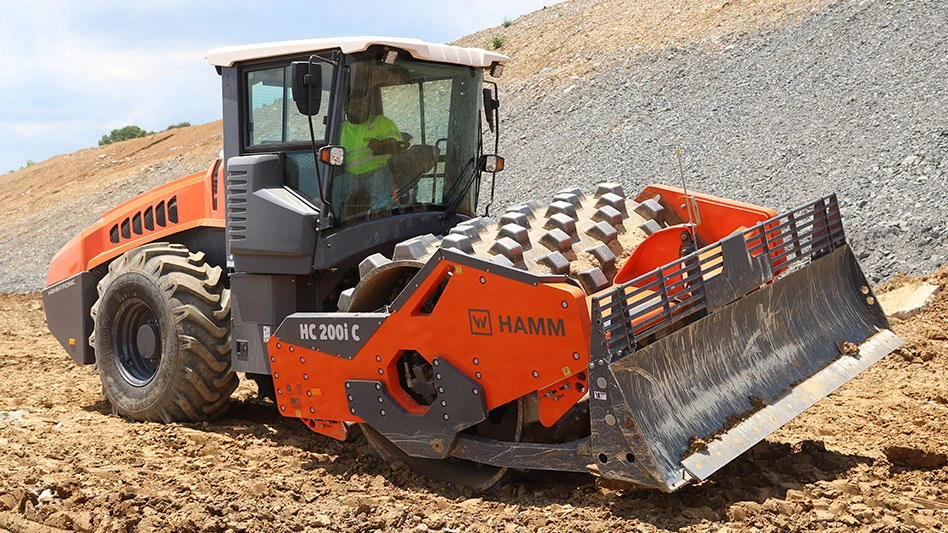
Photo provided by Champion Waste and Recycling
Biochar is quickly becoming a hot commodity in the agricultural sector. In 2020, the global biochar industry was valued at $170.9 million, and in 2030 that number is expected to hit $587.7 million, according to an analysis done by Allied Market Research, Portland, Oregon.
For Paul Kuhar, the vice president of Champion Waste and Recycling in Dallas, the opportunities for biochar are endless. However, the company got into the market out of necessity.
Before getting into biochar, Champion Waste ground most of its wood scrap into mulch, biomass and other landscaping products. However, because of an excess of material, the company needed to find alternative markets. “This business kind of fell on our lap,” Kuhar says.
He says began researching biochar and decided the market was untapped and he was unaware of anyone producing biochar in northern Texas. In 2019, Kuhar purchased a carbonizer and has been experimenting with the production of biochar ever since.
Kuhar says the best material for biochar production is pallets and wooden planks.
Tom Miles, executive director of the United States Biochar Initiative, Golden, Colorado, adds that wooden packaging, wooden frames from demolished buildings and materials such as grass and straw also make for good biochar.
However, Miles says wood that’s been treated with chemicals should not be used because of the health and safety risks it poses. An example is wood treated with preservatives like chlorine phenol.
The costs associated with Kuhar’s biochar business are small. His biggest expenses are fuel for the carbonizer and labor costs for the two workers who run it. These workers include one to operate an excavator to load material into the machine and someone to monitor the air levels.
“The costs associated with running a biochar operation depend on the size of the operation," Miles says. “It’s also like generating power on a dollar-per-ton basis. You've got your fuel processing if you have to run material through a material recovery facility, and then you’re putting it into a thermal conversion system.”
Right now, Kuhar has no plans to sell the biochar he’s producing. Instead, he is providing the Construction & Demolition Recycling Association, Chicago, with biochar to assist their studies with hydrogen sulfide gas in landfills.
“We’re still researching it because this is so new, especially in our industry, or in this area, that we’re having to get with people to talk about ways biochar can be used,” Kuhar says. “Plus, with the amount of wood we put through the process, we don’t make enough to sell.”
Miles says the return on investment for biochar production is should typically be about 20 percent to 30 percent.
While Kuhar hasn’t sold his biochar, he says he could sell to several markets, including organic composting. Other markets with growing demand for biochar include construction for stormwater runoff and landscaping.
However, biochar is experiencing the most growth in soil markets, which accounted for more than two-fifths of the global biochar market in 2020. This is expected to grow by a compound annual growth rate of 13.5 percent, according to Allied Market Research.
The regions that will experience the most growth in the market are the Asia-Pacific and North American markets, which will have a growth rate of 13.8 percent, according to Allied to Market Research.
While the market is growing, Miles and Kuhar say much must be considered when going into the biochar business—local regulations, markets and equipment all play a part in shaping an operation.
Kuhar says one of the top priorities when investing in biochar is learning about local regulations and codes. Making sure the operation does not interfere with local zoning ordinances or codes permitting biomass burning should be the first step a company takes.
Learning about biochar markets also is important because, without knowledge of where the product can be sold, a business can’t properly budget for how much or the quality of biochar that needs to be made.
“Another thing to consider is that only 20 to 25 percent of biomass is going to come out as biochar,” Miles says. “The rest is going to come out as energy. If there’s not enough value in the biochar you’re selling, you have to recover value from the energy through power.”
Kuhar adds that knowing the equipment you’re using and being patient with it is another important aspect. The equipment has a difficult learning curve, and it takes time to learn to make adjustments that fit the needs of an operation, he says.
The most important thing a company can do is research companies that operate in the same field.
“Before we invested in the equipment, we went out and watched other operations make the product,” Kuhar says. “The best thing you can do is reach people that you can have an honest conversation about the business and where the setbacks and successes are.”
Editors note: A previous version of this story incorrectly said Champion Waste Services worked with B&D Debris to research biochar's benefits. A section of the story also incorrectly attributed to Kuhar a reference that biochar is used in animal feed. Construction & Demolition Recyclingregrets the errors.
Latest from Construction & Demolition Recycling
- USTMA announces Tire Recycling Foundation
- New York landfill owners accused of permit violations
- Biden-Harris administration touts clean construction materials progress
- Stellar debuts NXT68 hooklift at WasteExpo
- Metso now offers diesel-electric Lokotrack models
- Green Mattress Recycling hires new CEO
- Collapsed Baltimore bridge brought down with chain of explosives
- Volvo CE broadens services commitment with minority stake in fleet software developer





